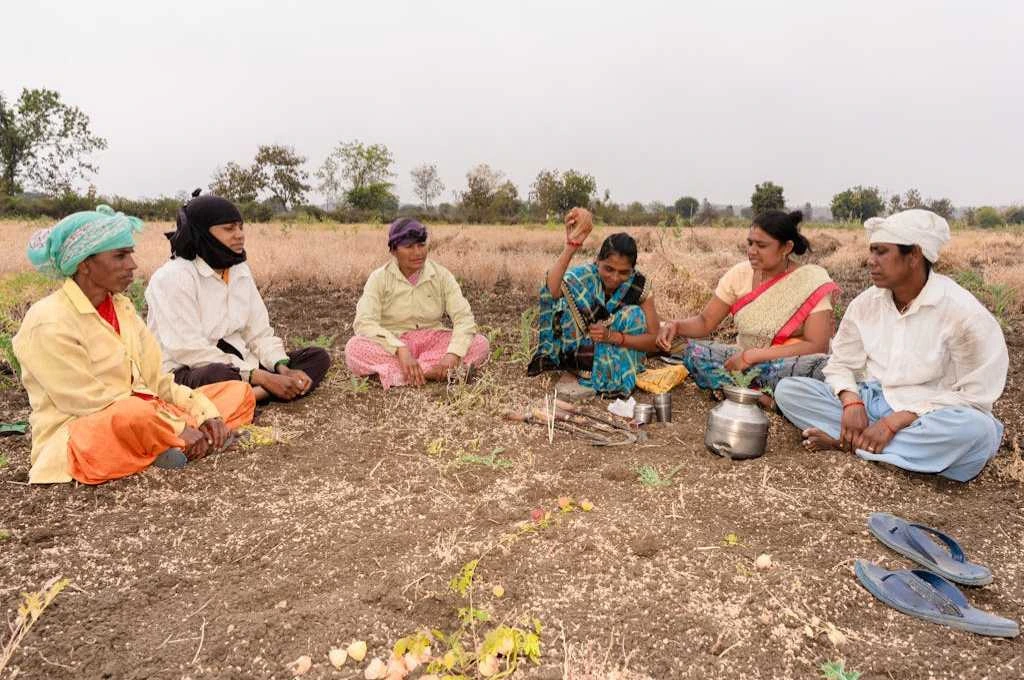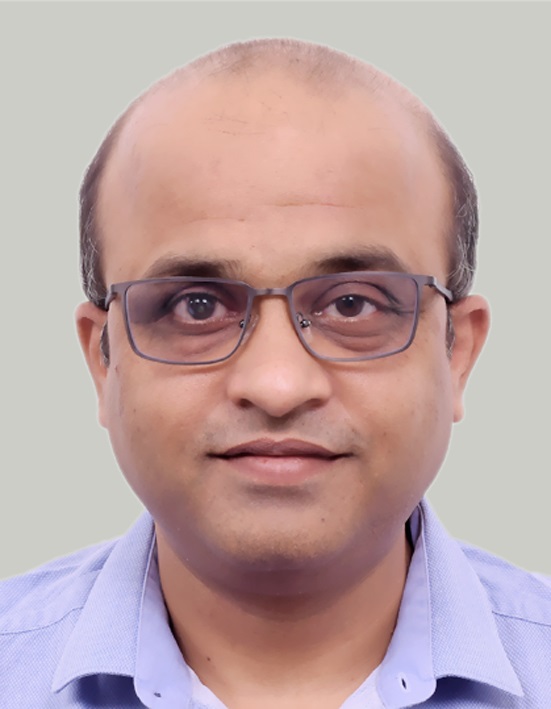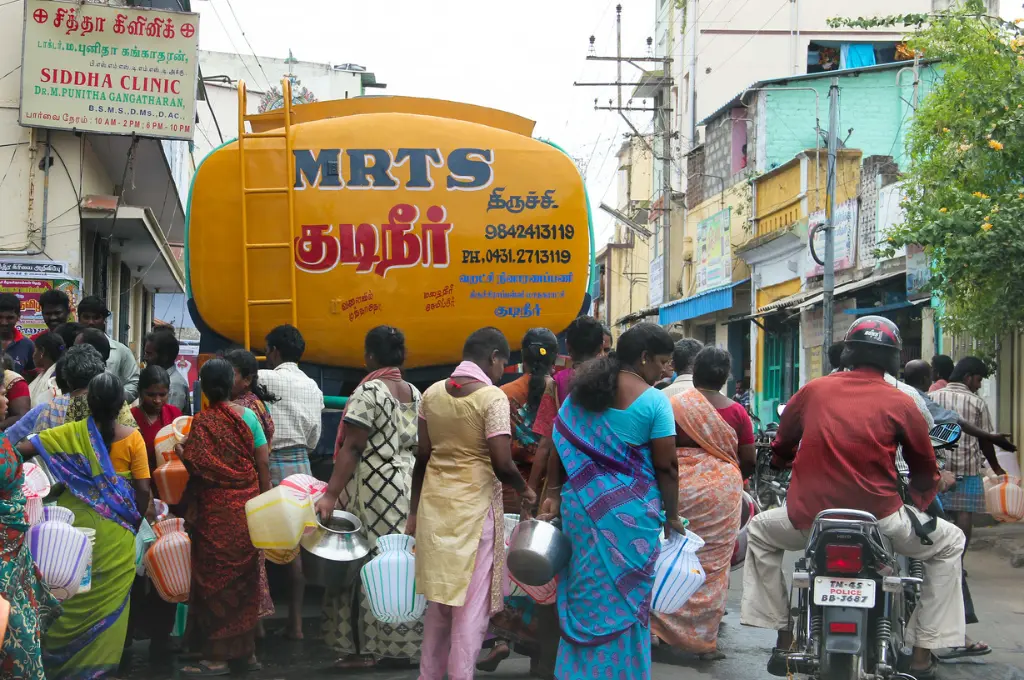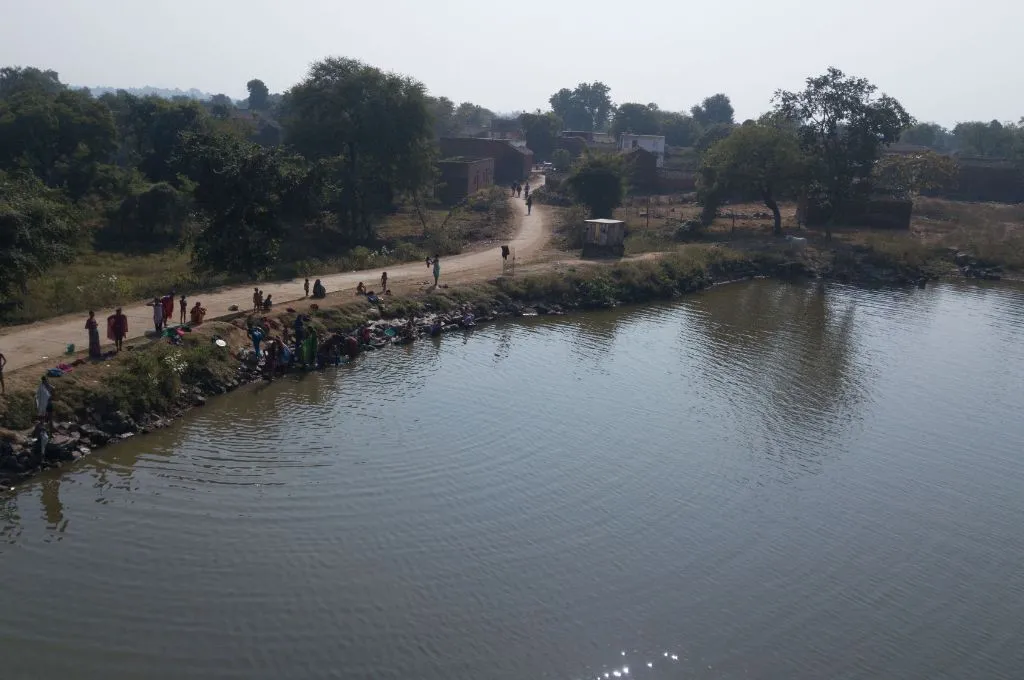Even though panchayats existed in India in the past, it was with the 73rd Constitutional Amendment Act, 1992, that Panchayati Raj Institutions (PRIs) were given the constitutional mandate over 29 subjects. These included agriculture, land improvement, minor irrigation, watershed development, and animal husbandry. The intent of this devolution of power to the lowest tier of governance, or gram panchayats (GPs), was to empower rural communities to work for social justice and economic development.
In a country like India, where majority of the rural population is still engaged in agriculture as the main economic activity, securing long-term viability of agriculture is critical to securing rural prosperity. However, the agriculture sector faces its own set of challenges, such as depleting groundwater levels, poor soil quality, climate variability, and dwindling farm incomes. Securing agriculture requires a collective and coordinated approach.
Agriculture viability depends most on water, which is a key input for it. Both groundwater and surface water are collective resources and require planning and execution to address the short- and long-term needs of the community. The problem of water is also unique in every context. Given the variance in the nature of the water problem—too much rain, too little rain, ill-timed rain, non-availability of irrigation water, etc.—local governments are best suited to tackle the regional water challenge. As water is a local resource, it is the natural domain of local governments.

Missed opportunities
Over the past several decades, government effort has focused on devolving powers to GPs and making more funds available to them. Today, GPs play an important role in planning and implementing government schemes and programmes. They receive funds provisioned by the Central Finance Commission (CFC), State Finance Commission (SFC), and their own sources of revenues (OSR). In addition, GPs are mandated to directly implement flagship government programmes such as MGNREGA.
Despite these measures, GPs face challenges in effectively delivering the mandate conferred to them. Each GP is required to host gram sabhas—platforms for communities to participate in and contribute to the development planning process. However, the process is often met with the following challenges:
Perspective gap: The focus is on short-term action rather than long-term solutions. Well-intentioned programmes and schemes address multiple rural challenges—of creating temporary employment and building long-term water infrastructure for the community to secure agriculture. However, these schemes tend to miss a sustainable vision. For example, work within a watershed often starts with creating storage infrastructure in the valley before any ridge treatment. As a result, while the programme funds get utilised, treatment is not comprehensive and may not provide a long-term solution for the community.
Capacity gap: With decentralisation, the responsibilities of the GP have increased manifold. For instance, each GP is tasked with delivering programmes related to different subjects such as education, health, and agriculture. However, they do not have sufficient full-time human resources to efficiently execute all the functions and responsibilities they have been tasked with.
Capability gap: Frontline PRI functionaries have not been able to catch up with the increased use of technology. For instance, under MGNREGA, all conservation efforts and infrastructure are required to be appropriately located (within the watershed) and geotagged, but often there is no IT resource at the panchayat level to do this well or accurately. Thus, the conservation infrastructure created is either not appropriate for the location or does not have access to water. Upgradation of skills for PRI functionaries is critical for improved quality of programme implementation.

Participation gap: Gram sabhas are held a couple of times in a year, which makes it difficult for members to collate all the village-level needs in a structured and prioritised manner. Even though the frequency of gram sabhas has increased, the meetings are held sporadically or have limited representation, leading to ineffective planning and decision-making.

How gram panchayats in Chhattisgarh are moving the needle
The Transform Rural India (TRI) and HUF partnership in Chhattisgarh enables panchayats to drive collective action at various levels. The southern plateau of Chhattisgarh experiences high rainfall in the monsoons but faces drought-like conditions for most of the year, especially in the summer. The Ministry of Panchayati Raj has grouped the 17 Sustainable Development Goals into nine themes that are more relevant to GPs and the community. One of the themes is water-sufficient panchayats, which needs to be leveraged.
Water security in this region is largely dependent on how effectively water is conserved during the monsoons and how efficiently it is used for agriculture and other demands. With appropriate platforms, and capacity building, GPs can be the fulcrum of water security in water-stressed areas.
1. Ensuring universal participation and ownership
Self-help groups (SHGs) provide an open and accessible space for every rural household, including poor and marginalised ones. SHG meetings are held at frequent intervals and provide a powerful plank for women to raise and discuss water security concerns and solutions. In addition, in Chhattisgarh, half the GP seats are reserved for women. Given that women are part of both the panchayat and SHGs, the chances of panchayats collaborating with women groups on a critical issue like water are much higher.
In Chhattisgarh, collectives conducted an exercise to assess water needs and usage across 200 villages, creating more than 9,000 plans in coordination with GPs. They have institutionally routed these demands to the block administration. They are also part of the block-level coordination committees for monitoring the progress of these plans.
2. Capacity and capability building
Panchayat representatives and functionaries are aware of the provisions of panchayats, and their role and administrative aspects, but they need support on water security, especially the technical and technological elements of it. For instance, TRI trains representatives on how to use geographic information system (GIS) technology to understand the overall lay of the watershed their village falls in. Frontline workers are also familiarized with the processes and the technical and technological aspects, ensuring inclusion, diversity, and productivity.
On the other hand, while communities benefit from different government programmes, these programmes work in silos. Programmes such as MGNREGA and NRLM benefit the same community, but look at a limited aspect of the overall problem. NRLM works through SHGs, and MGNREGA ensures the poorest community members receive at least 100 days of employment in a year. As the target community is the same for both programmes, an integrated approach would be far more impactful in the long run.
Locals already have traditional knowledge of their geography and terrain. To supplement this know-how, TRI provides information to SHG members on water security and technical details on possible interventions appropriate for their region. SHG members, who are also gram sabha members, are informed about institutional aspects and group behaviour. The programme focuses on building the capacity of women elected representatives—their role, voice, and agency—on water security issues and the use of technology.
Building the capacity and capability of communities and panchayats is critical to ensure that the process is self-sustaining.
3. Platform for perspective building
The programme in Chhattisgarh brings key stakeholders—community members represented through SHGs; panchayat members (elected members); and local functionaries (gram sachiv and other department functionaries)—to a common platform by instating a Gram Panchayat Coordination Committee (GPCC). The purpose of the GPCC is to facilitate the development of local plans to improve water security in the region. These plans are incorporated in and implemented as part of the Gram Panchayat Development Plan (GPDP). This process is closely coordinated by SHG members.
A platform such as the GPCC helps panchayats drive the development agenda in an organised way by ensuring discussion and representation at different tiers, that is, village, block, and zilla. The GPCC also interacts with different departments of the government—Women and Child, Agriculture, Fisheries, etc.—which enables them to converge schemes for an integrated plan.
Such a systemic approach ensures long-term benefits are prioritised. In this way, plans are representative of local needs and, therefore, are fully owned by the gram sabha members.
Helping PRIs develop this perspective can thus enable convergence between flagship programmes and the allocation of funds available to them towards a common vision. For effective management of water resources, plans need to account for supply and conservation efforts as well as demand-side efforts. Collective planning and execution through panchayats can help in doing this successfully.
—
Know more
- Listen to this podcast that explores how communities and corporates can step up water conservation efforts.
- Learn about watershed development programmes in India.
- Learn about the history of SHGs in India.






